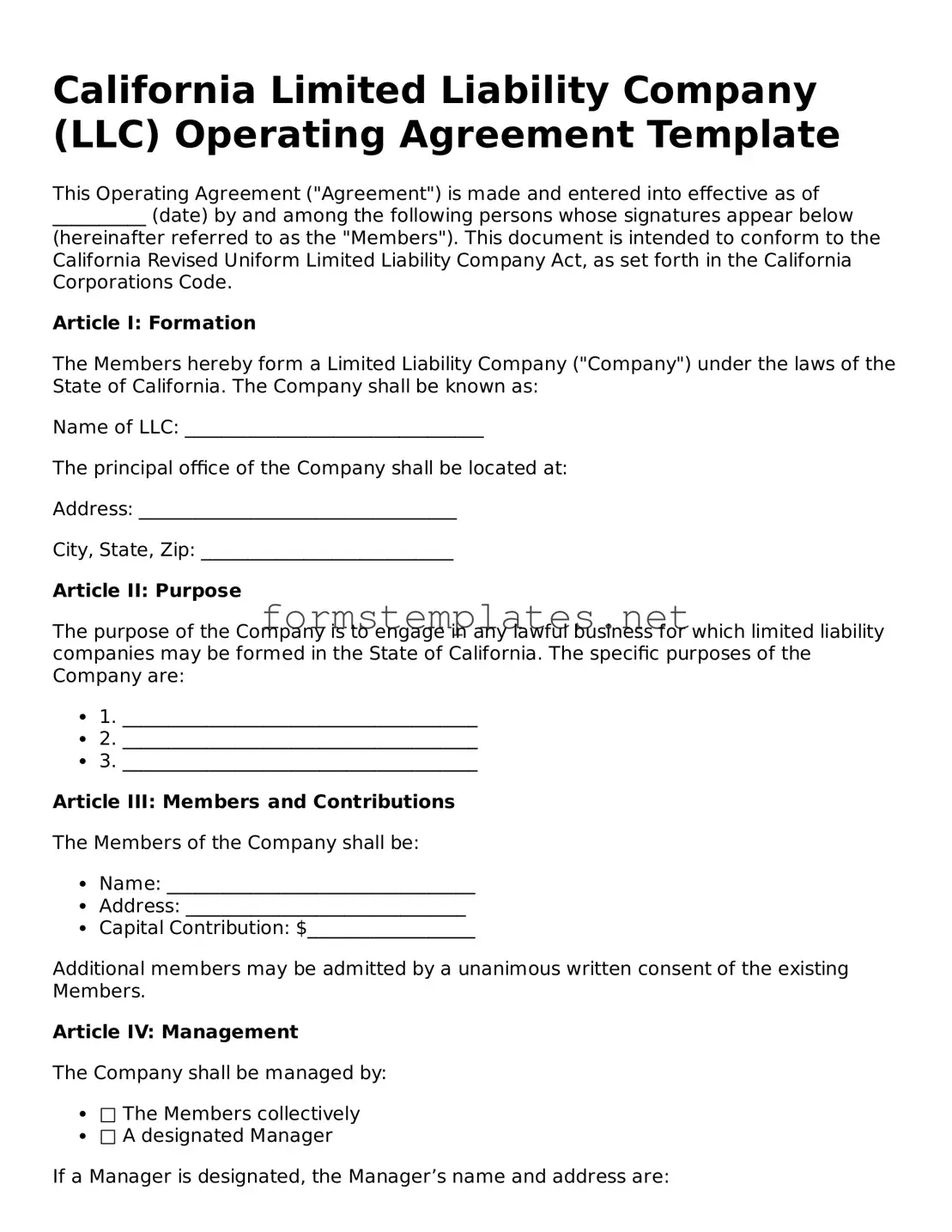California Limited Liability Company (LLC) Operating Agreement Template
This Operating Agreement ("Agreement") is made and entered into effective as of __________ (date) by and among the following persons whose signatures appear below (hereinafter referred to as the "Members"). This document is intended to conform to the California Revised Uniform Limited Liability Company Act, as set forth in the California Corporations Code.
Article I: Formation
The Members hereby form a Limited Liability Company ("Company") under the laws of the State of California. The Company shall be known as:
Name of LLC: ________________________________
The principal office of the Company shall be located at:
Address: __________________________________
City, State, Zip: ___________________________
Article II: Purpose
The purpose of the Company is to engage in any lawful business for which limited liability companies may be formed in the State of California. The specific purposes of the Company are:
- 1. ______________________________________
- 2. ______________________________________
- 3. ______________________________________
Article III: Members and Contributions
The Members of the Company shall be:
- Name: _________________________________
- Address: ______________________________
- Capital Contribution: $__________________
Additional members may be admitted by a unanimous written consent of the existing Members.
Article IV: Management
The Company shall be managed by:
- □ The Members collectively
- □ A designated Manager
If a Manager is designated, the Manager’s name and address are:
Name: ____________________________________
Address: _________________________________
Article V: Distributions
Distributions of profits, losses, and capital shall be made according to the Members' respective ownership percentages unless otherwise noted:
- Name: ___________________ - Percentage: _____%
- Name: ___________________ - Percentage: _____%
Article VI: Meetings
Regular meetings of the Members shall be held at least annually at a time and place designated by the Members. Special meetings may be called by any Member.
Article VII: Indemnification
The Company shall indemnify its Members to the fullest extent permitted by California law, against any and all expenses and liabilities incurred in connection with the Company.
Article VIII: Amendments
This Agreement may be amended or modified only with the written consent of all Members.
IN WITNESS WHEREOF, the undersigned have executed this Operating Agreement as of the date first above written.
_________________________________________
Name: _________________________________
_________________________________________
Name: _________________________________
_________________________________________
Name: _________________________________
